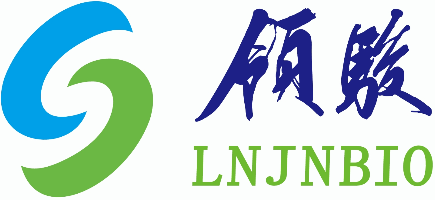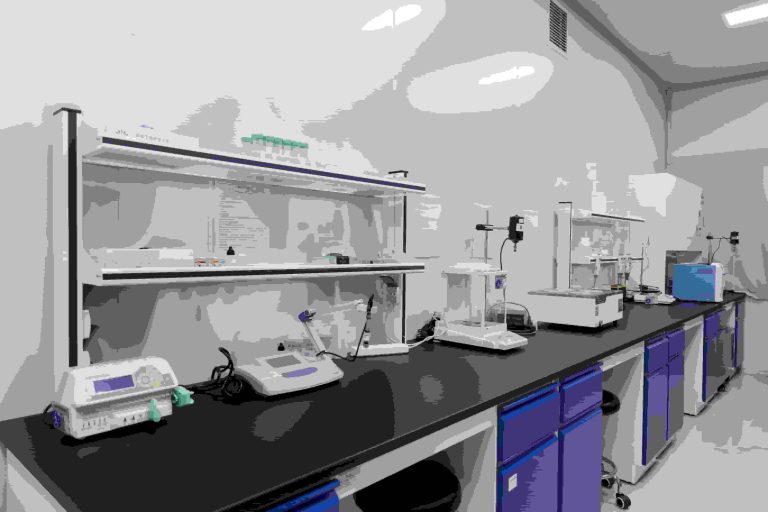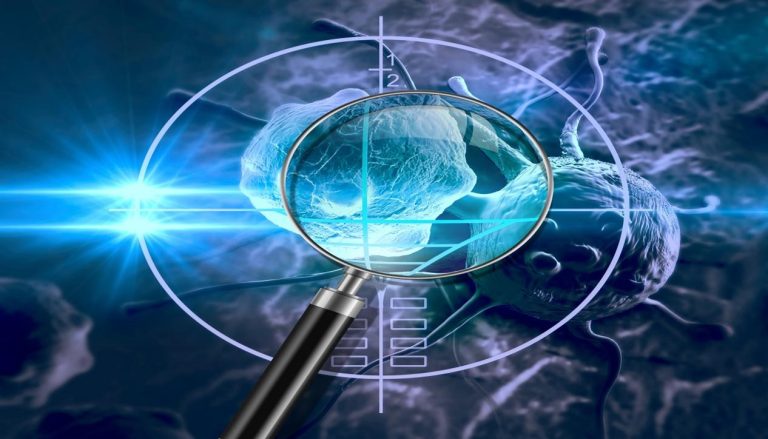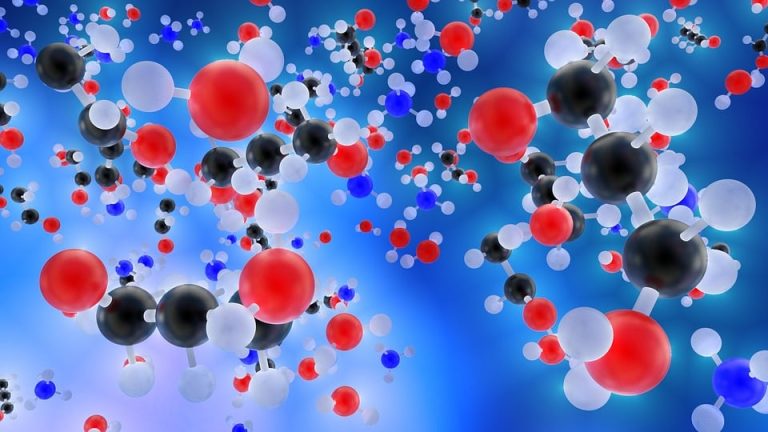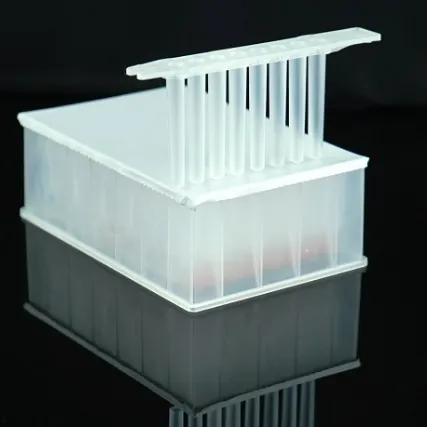Professional Manufacturer of Biomagnetic Beads
At present, many problems in molecular biology research require grading DNA according to size, which is known as fragment sorting. Electrophoresis on agarose gel allows the separation of DNA in the range of 10 5~hundreds of base pairs. In contrast, electrophoresis on acrylamide gel allows the separation of DNA in the range of thousands of base pairs. To achieve high resolution in these separation processes, the size difference to separate two fragments should be 10% and a nucleic acid content of up to 5 to 10 milligrams.
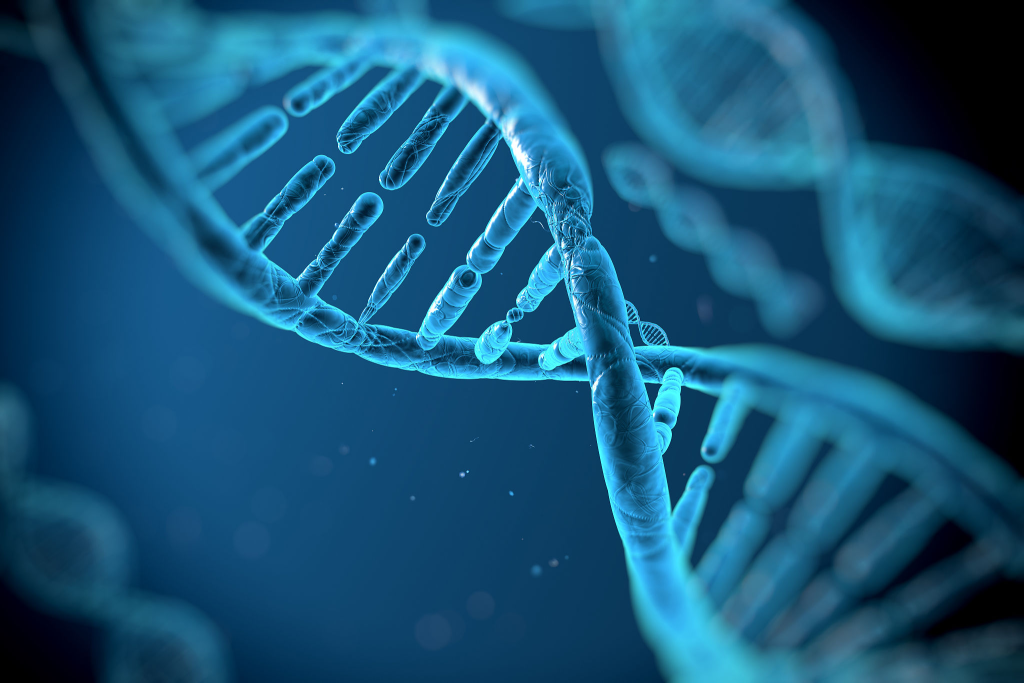
The selective precipitation method, a combination of polyethylene glycol and biological magnetic beads, stands out as a more efficient and convenient approach to fragment sorting. In high concentrations of PEG and NaCl solutions, PEG disrupts the hydration layer outside DNA molecules, causing them to aggregate and precipitate. This exposes the negatively charged phosphate groups, which then form a ‘salt bridge’ with the carboxyl groups on the magnetic beads’ surface, allowing DNA to be adsorbed onto the beads.
The longer the DNA, the more negatively charged phosphate groups are exposed on the surface, making the entire molecule more negatively charged and easier to adsorb onto magnetic beads, and it can be recovered with lower concentrations of PEG and NaCl. The shorter the DNA, the higher the concentration of PEG and NaCl needed to break down the hydration layer on its surface thoroughly, exposing enough negatively charged phosphate groups to be adsorbed by magnetic beads and then recovered. If you want to recover shorter DNA fragments, you need to add a larger volume of magnetic beads. The ratio of magnetic bead suspension to the sample also affects the size of fragments screening. As the increasing of the concentration of magnetic bead suspension, the magnetic beads will increase their adsorption capacity for small fragments in addition to large fragments.
When a specific length of DNA fragment is to be separated by magnetic beads, two rounds of sorting are typically performed. In the first round, the magnetic beads bind to DNA with higher molecular weight, which is then removed by discarding the beads. The second round involves the remaining product, where the magnetic beads bind to DNA with higher molecular weight and remove DNA with lower molecular weight by discarding the supernatant.
Both double-stranded DNA, single-stranded DNA, and RNA can dissociate negatively charged phosphate groups in solution so they can be purified and recovered with magnetic beads. However, single-stranded DNA and RNA cannot be screened for fragment size. The secondary structure of double-stranded DNA is generally a relatively stable linear double-helix molecule. In the presence of PEG, the number of negatively charged phosphate groups dissociated is positively correlated with its length. However, RNA and single-stranded DNA have complex secondary structures, which prevent the exposed negative groups from being positively correlated with length, making it impossible to screen fragments like DNA. In addition, due to the varying stability of DNA and RNA at different pH values, the pH of the buffers used for purifying DNA and RNA are different because DNA and RNA have different stability under different pH conditions.
Shanghai Lingjun Biotechnology fragment sorting magnetic beads are independently developed and produced from raw materials to finished magnetic beads, with strict quality control to ensure that the performance and consistency of the final product meet high standards and ensure a stable supply of the product. The company continuously invests in research and development, always maintaining an absolute emphasis on product quality, customer satisfaction, and market competitiveness.
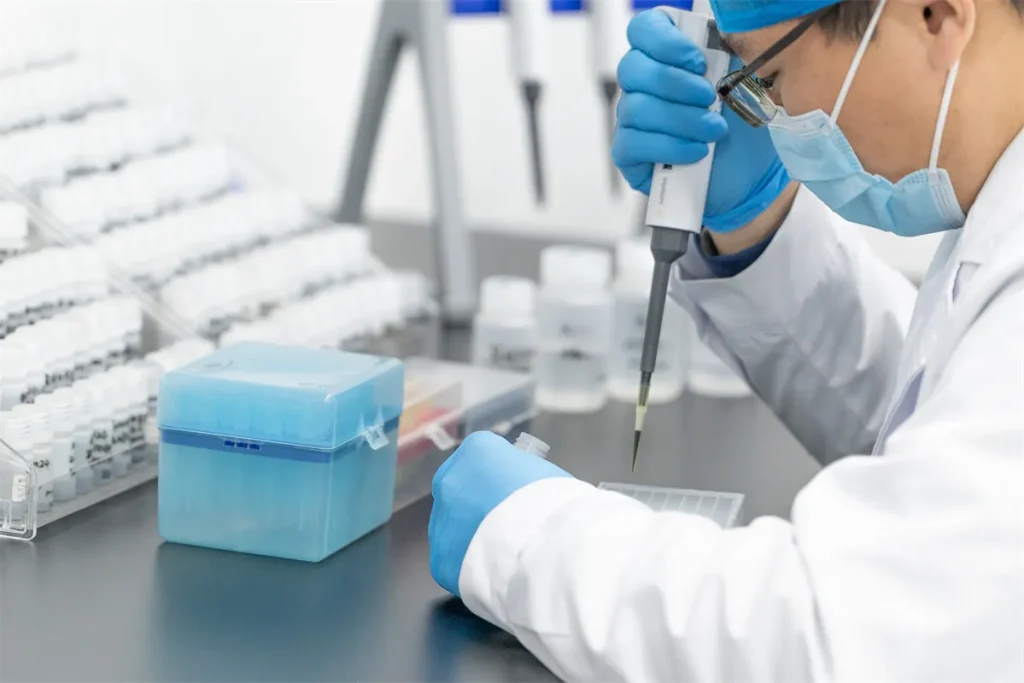
Supplier Introduction
Shanghai Lingjun Biotechnology Co., Ltd. was established in 2016 which is a professional manufacturer of biomagnetic materials and nucleic acid extraction reagents.
We have rich experience in nucleic acid extraction and purification, protein purification, cell separation, chemiluminescence and other technical fields.
Our products are widely used in many fields, such as medical testing, genetic testing, university research, genetic breeding, and so on. We not only provide products but also can undertake OEM, ODM, and other needs. If you have related needs, please feel free to contact us at sales01@lingjunbio.com.
